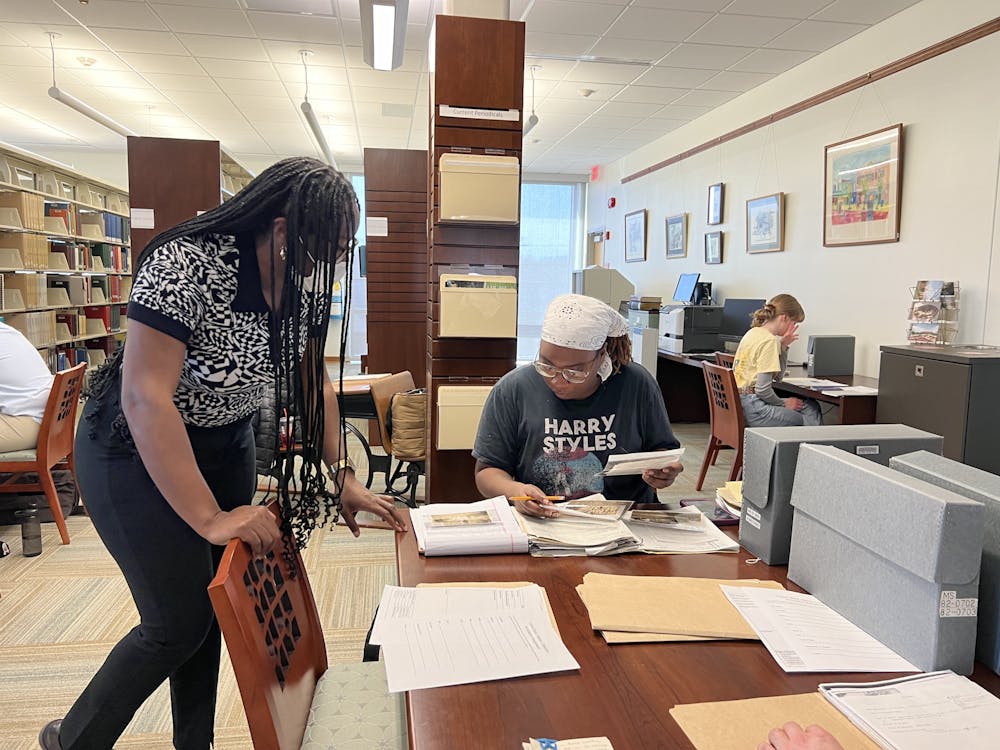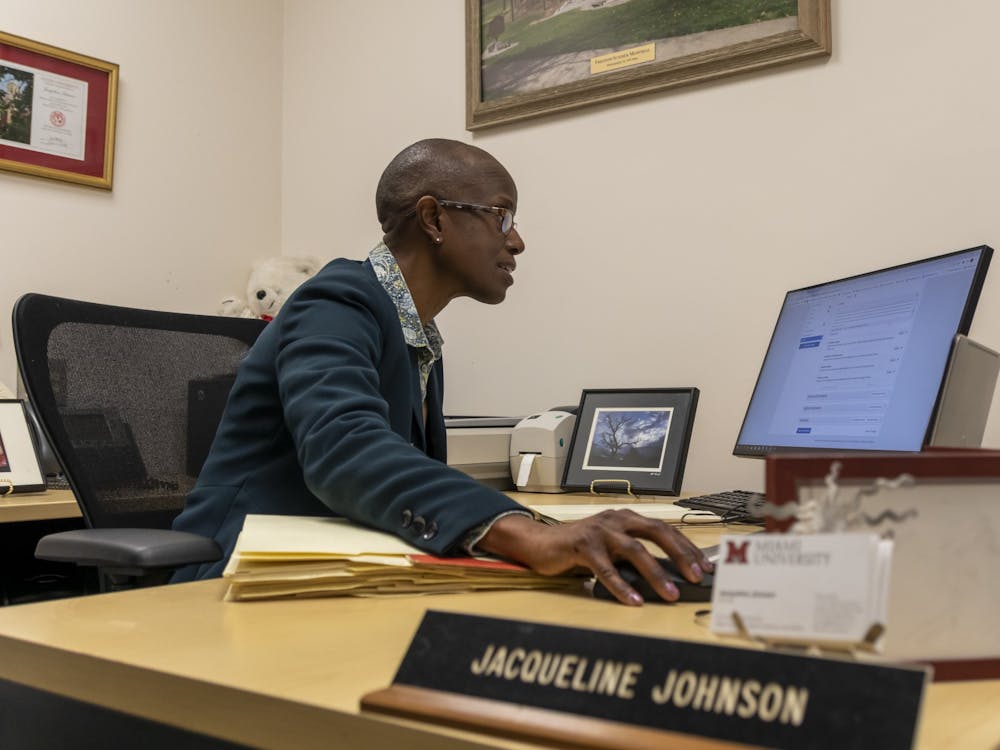
Senior library technician at the B.E.S.T Library John Williams shows off one of four 3D scanners on campus. Students from across disciplines can take advantage of this technology by emailing 3Dprinting@miamioh.edu. (Katie Taylor | The Miami Student)
Miami University's anthropology department can now replicate history thanks to the arrival of a new 3D scanner.
Anthropology faculty Leighton Peterson and Cameron Hay-Rollins wrote the grant that funded the purchase, bringing to campus the university's fourth 3D scanner.
This new scanning and printing technology allows for replication of 3D objects via digital file, according to anthropology faculty Jeb Card.
"We are definitely getting a bang out of our buck for educational purposes," Card said.
With the purchase of the 3D scanner, the anthropology department is able to scan, download and print original artifacts to use in the classroom.
Senior Caroline Johnson has worked closely with Card through an independent study exploring the effects of 3D printing and scanning on historical artifacts. So far, her findings have shown that the printer is a great enhancement to the classroom.
"The ability to have identical 3D models of the same artifact is crucial to the fields of bioanthropology and archaeology," Johnson said. "This enhances student learning, saves money and protects the condition of valuable artifacts."
As an example of the technology's educational benefits, Card presented a piece of paper covered in intricate stamp marks that were transferred from a replicated South American stamp artifact.
"We made a copy [of the stamp] and covered it in nail polish remover, aka acetone," Card said, "Melting the surface slightly and making it water resistant, so that the ink would just stay on the top."
This way, students are able to physically re-enact the stamping process and the original artifact remains in mint condition.
Enjoy what you're reading?
Signup for our newsletter
In addition to replicating artifacts Miami already possesses, the 3D printing technology also allows the printing of any 3D object that exists as a downloadable file.
"There's a museum in Arkansas that has about 400 artifacts ready for viewing and downloading right there," Card said. "That is the future."
According to Card, the Business, Engineering, Science and Technology (B.E.S.T.) library has a display of already printed objects, including a miniature replica of a building at Machu Picchu, a famous Incan site in Peru. The figure is not a model, but an actual scan of the building, downloaded off the Internet.
Though the anthropology department has been getting great use out of this technology, they are not the first ones to do so. There are currently three other scanners on campus, located in the B.E.S.T. Library and the Center for Information Management (C.I.M.) at King Library.
Senior library technician at the B.E.S.T Library John Williams said these scanners are available to students any time they want them.
"Anyone who wants to [scan and/or print an object] can just come and see us," Williams said.
Students must begin by setting up a face-to-face consultation by sending an email to 3Dprinting@miamioh.edu. After the consultation, they can print at the cost of 20 cents per gram.
Students from a variety of departments, such as chemistry, engineering and architecture use the technology, Williams said.
"The fine arts department has a lot of [students] who do 3D modeling but now they can have an object at the end of it," Williams said. "The fastest growing market right now is in 3D modeling, and 3D printing. It's a very natural fit for students to use [the technology]."




